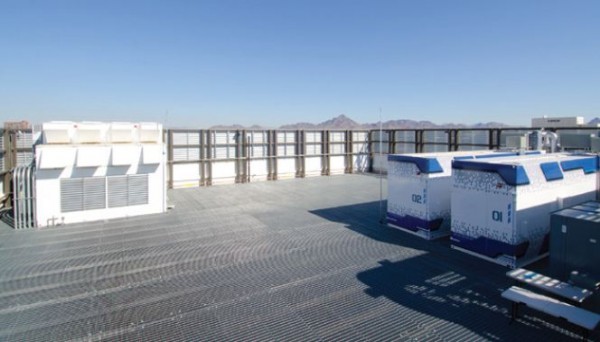You can only imagine the huge volume of data that an operation like eBay stores and dishes out—and how much energy it might take to run its servers. So when the company needed to consolidate its data center space, it turned to The Green Grid, a consortium dedicated to promoting energy-efficient operations, to help them do it. The result was not only a highly efficient data center for the auction site, but a recently published case study of best practices.
The case study focuses on “Project Mercury,” an eBay data center development in Phoenix. The driving factors in making it as green-operating as possible, according to the study: use of Green Grid’s Power Usage Effectiveness (PUE) metric and Data Center Maturity Model (DCMM) throughout the process, from design to procurement to installation. “EBay’s metrics-based approach optimized the company’s data center supply chain for lower PUE and TCO (total cost of ownership), due in large part to higher server density within the data center and a ‘hot water’ cooling system that requires traditional chiller operation only a few days per year,” according to The Green Grid.
But wait: How does hot water helped to keep the servers cool? Well, it’s all relative. First, eBay embraced running some of its servers at higher temperatures, which apparently can be safely done, to an extent. As a result, even when water stored at the Phoenix data center warmed up, it wasn’t as hot as the interior of some sections of the data center. So the hot water could often be used in the heat exchangers that protect the servers themselves from excessive heat.
EBay’s overall goal in its data storage project was to turn 11 centers into three, but there was another challenge: it needed to consolidate its data centers and deploy new servers in a very short timeframe.
“We needed to meet an organizational demand to consolidate data centers and deploy tens of thousands of new servers in under six months,” Dean Nelson, senior eirector for global goundational services at eBay, said in a statement. “As part of that process, we wanted to push the envelope in terms of what had been achieved in data center efficiency to date. EBay was able to achieve both goals because we took a metrics-based approach to the process, which included ensuring that our server and data center RFP processes used PUE and TCO to optimize our supply chain, taking a modular, scalable, and forward-thinking data center design, and aligning ourselves with The Green Grid’s DCMM from the beginning.”
PUE is often used as a measure of incremental efficiency improvements after the fact. But with Project Mercury, eBay used PUE as a driving tool in its request-for-proposal process. And it used TCO metrics to assess servers using the total lifetime kilowatt-hours (kWh) used while running its workload.
The result, according to the report, is a highly efficient data center, one that lowered the costs for eBay’s global online commerce platform, increased business agility and made room for future growth. The full case study is available for download from Green Grid.
[source: http://feedproxy.google.com/~r/Earthtechling/~3/AZJAXpHr77A/]


Leave a Reply
You must be logged in to post a comment.